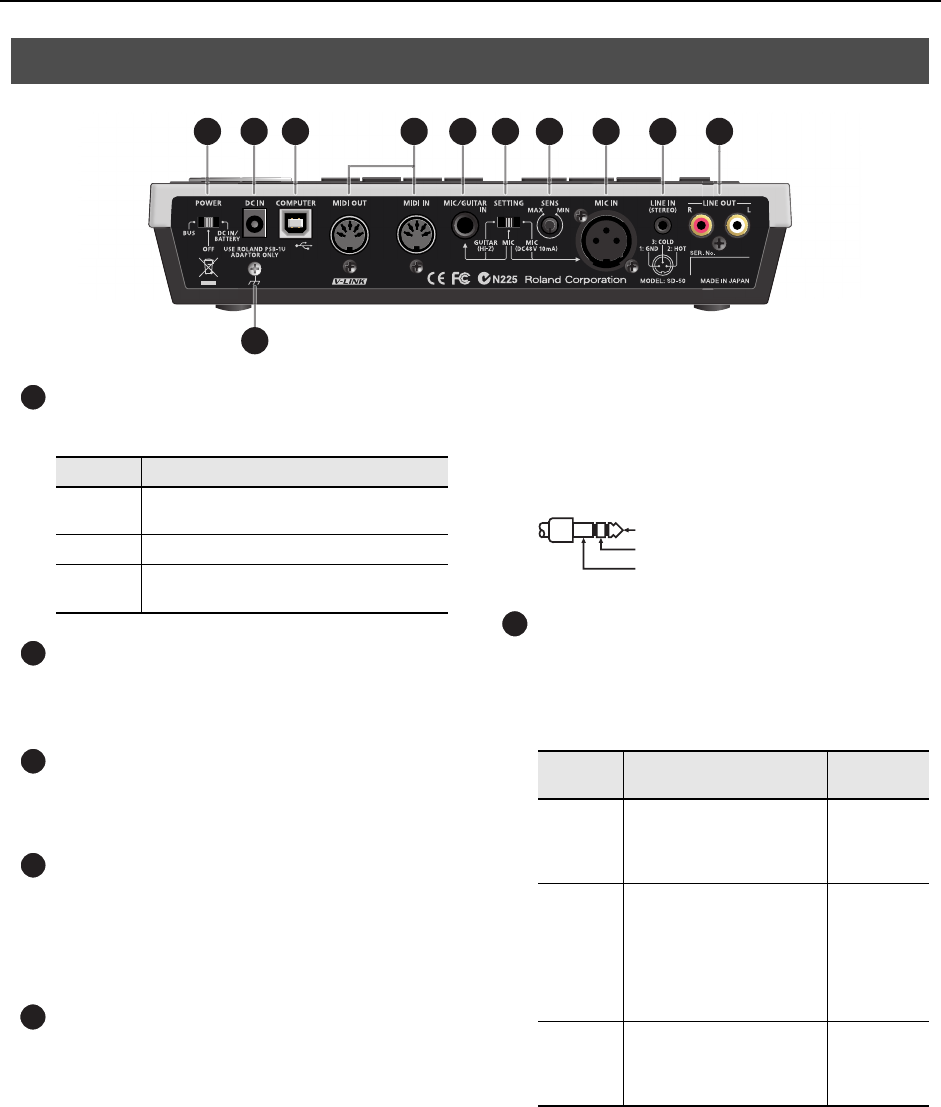
16
Names of Things and What They Do
ig.XLR_e.eps
[POWER] switch
This switch turns the power on/off (p. 22).
DC IN connector
Connect the AC adaptor here (p. 20).
* You must use the supplied AC adaptor.
COMPUTER connector
Use a USB cable to connect the SD-50 to your computer
(p. 23).
MIDI connectors (OUT, IN)
Use MIDI cables to connect the SD-50 to another MIDI
device (p. 60).
These connectors allow MIDI messages to be transmitted
and received.
MIC/GUITAR IN connector
Connect your guitar or microphone here (p. 55).
This is an analog audio input jack with a microphone preamp.
It can accept either balanced or unbalanced connections.
922
* This instrument is equipped with balanced (TRS) type
jacks. Wiring diagrams for these jacks are shown below.
Make connections after first checking the wiring diagrams
of other equipment you intend to connect.
fig.TRSJack.eps
[SETTING] switch
• Set this appropriately for the device connected to the MIC/
GUITAR IN jack.
• This switch will turn on the phantom power that is
supplied to the MIC IN jack.
Rear Panel
11
21 3 4 5 6 7 8 9 10
Setting Explanation
BUS
When connected to a computer and using bus
power, this setting turns the power on.
OFF Turns the power off.
DC IN/
BATTERY
When using an AC adaptor or batteries (sold
separately), this setting turns the power on.
1
2
3
4
5
Setting Explanation
Nominal
input level
GUITAR
(Hi-Z)
Use the “GUITAR (Hi-Z)” setting
if an electric guitar is
connected to the MIC/GUITAR
IN jack.
-30– -10 dBu
MIC
Use the “MIC” setting if a
microphone that does not
require phantom power is
connected to the MIC IN jack,
or if a microphone is
connected to the MIC/GUITAR
IN jack.
-50 -30 dBu
MIC
(DC 48V
10mA)
Use the “MIC (DC 48V 10mA)”
setting if a phantom-powered
condenser microphone is
connected to the MIC IN jack.
-50– -30 dBu
TIP: HOT
RING: COLD
SLEEVE: GND
6
SD-50_e.book 16 ページ 2010年1月25日 月曜日 午前10時52分


















